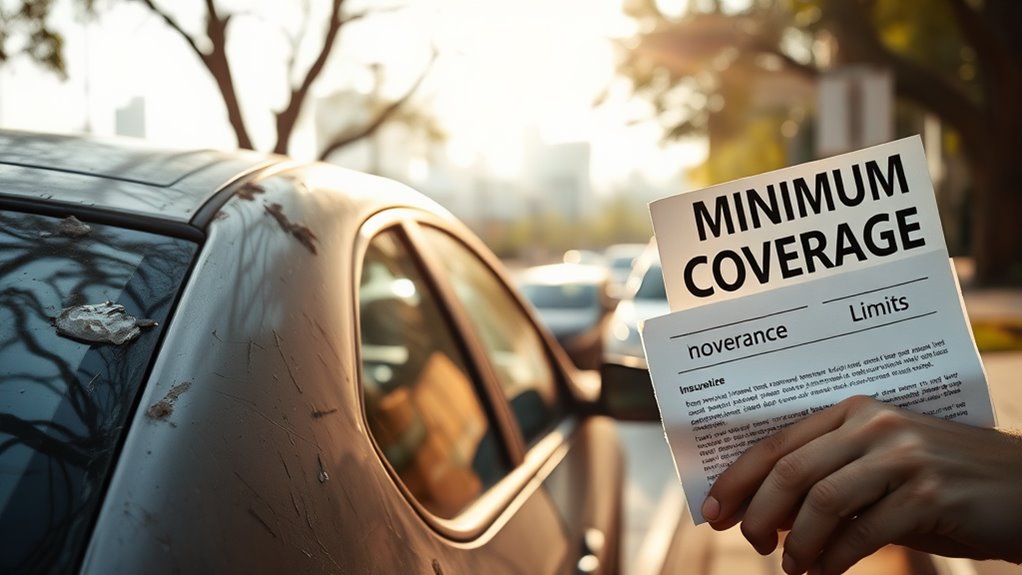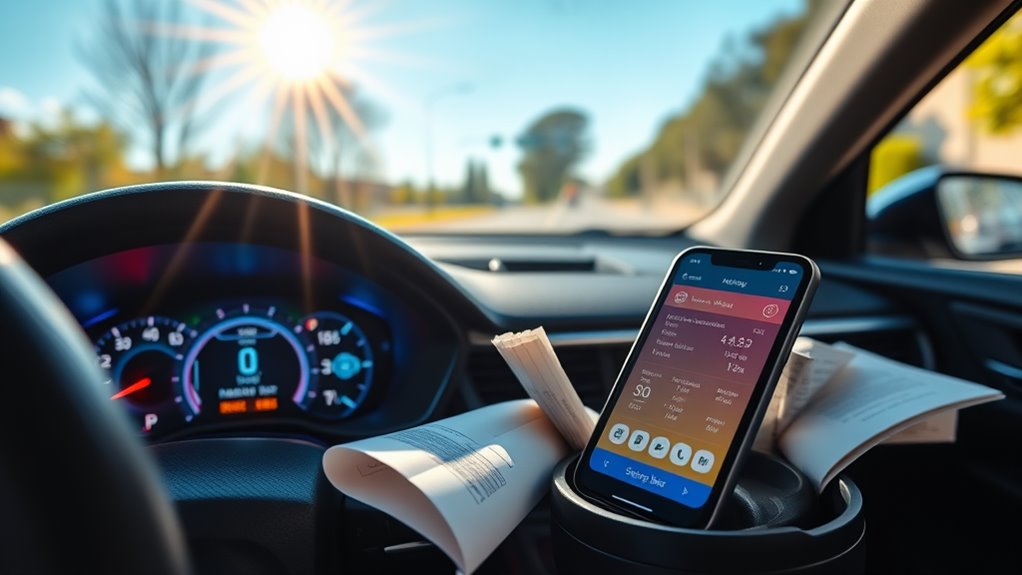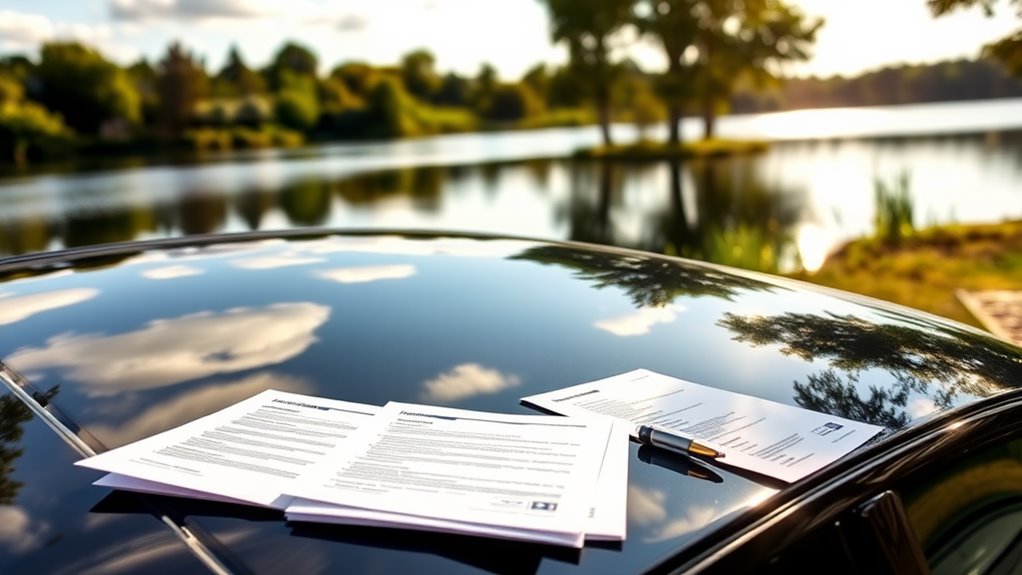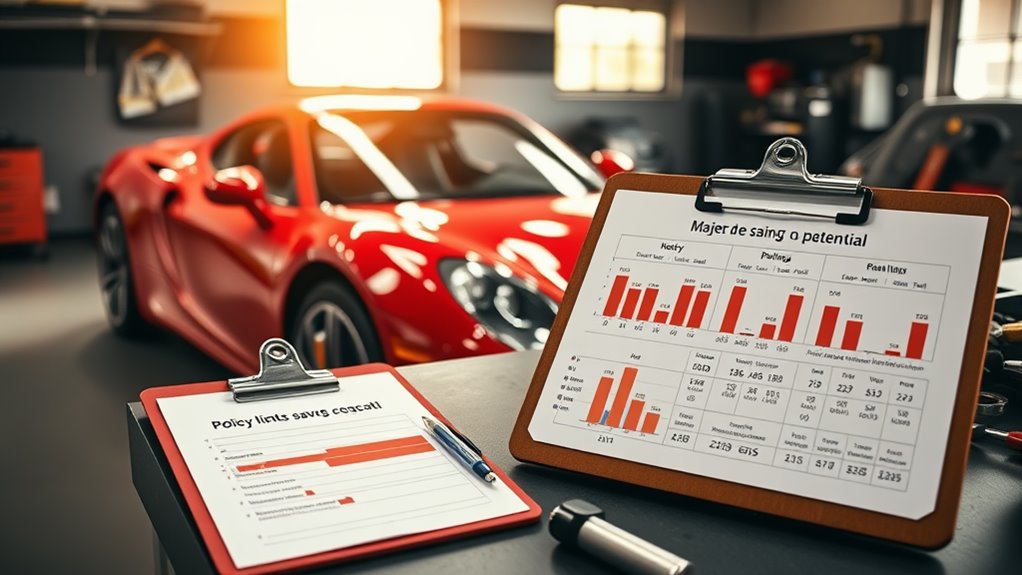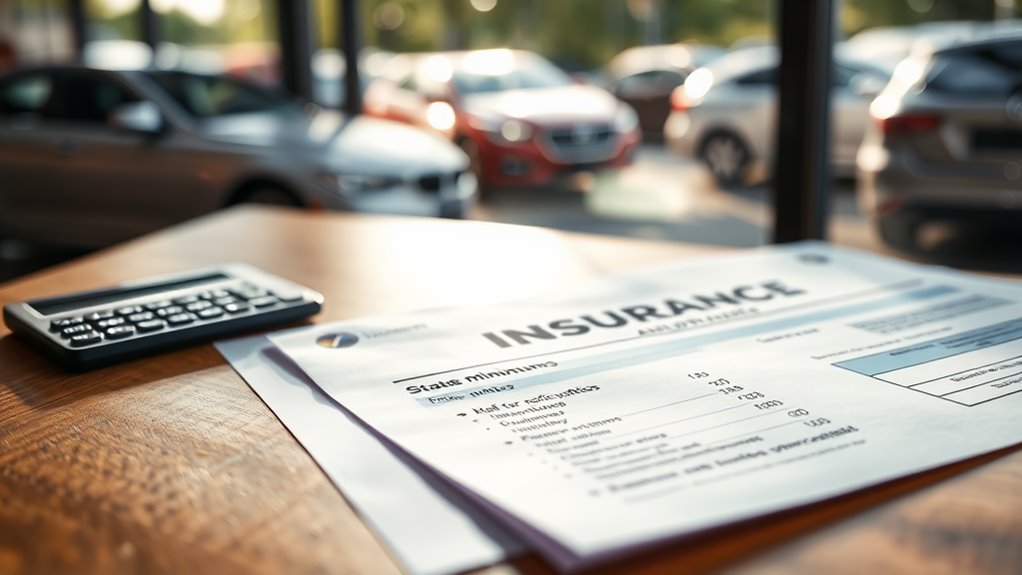Did you know that drivers can save up to 30% on their insurance premiums with usage-based insurance (UBI)? This innovative approach tailors costs to your actual driving habits, making it increasingly relevant in today's economic landscape. By leveraging real-time data, UBI not only provides fair pricing but also encourages safer driving. What are the specific ways UBI can help you cut costs while enhancing your overall insurance experience?
Key Takeaways
- Premiums are aligned with actual usage, reducing costs during idle times for drivers.
- Real-time data allows for dynamic pricing adjustments, ensuring fair premiums based on current driving conditions.
- Safer driving habits can lead to discounts of 10% to 30%, promoting economic savings.
- Immediate accident detection can prevent costly claims and expedite emergency responses.
- Flexible coverage options cater to gig workers, helping them save on insurance costs during varied usage.
Real-Time Data Adjustments Lower Premiums
As insurers increasingly leverage real-time data, you'll find that premiums can be considerably lowered through more accurate risk assessments.
By incorporating expanded data points like traffic patterns and weather, insurers dynamically adjust risk evaluations to reflect current conditions, ensuring fairness in pricing. This approach aligns with the trend of offering affordable car insurance options that cater to diverse driver needs.
Advanced analytics and AI tools identify predictive patterns that inform these assessments, while real-time monitoring of your driving behavior allows for personalized underwriting. This means your premium is tailored to your specific habits, promoting safer driving through incentives.
Additionally, insurers can quickly adapt pricing strategies to market changes, making your premiums responsive to actual risk levels. Ultimately, these real-time data adjustments lead to a more equitable and cost-effective insurance experience for you. Furthermore, the use of real-time data enhances the accuracy of risk evaluations, allowing for more nuanced understanding of factors affecting your policy.
Pay-Per-Mile Options for Low-Mileage Drivers
If you're a low-mileage driver, pay-per-mile insurance might be an ideal fit for your needs. This type of insurance allows you to pay a monthly base rate plus a fee for each mile you drive, making it cost-effective for those who drive less than 10,000 miles annually.
Here are some benefits:
- Potential savings: Save up to 40% compared to traditional policies.
- Flexible premiums: Your payment aligns with your actual driving.
- Mileage tracking: Insurers monitor your miles for accurate billing.
- Environmental benefits: Encourages less driving, reducing carbon emissions.
- Widely available: Offered by major insurers like Nationwide and Metromile.
This model's variable structure can greatly benefit infrequent drivers, ensuring you only pay for what you use.
Customized Risk Assessments Tailored to Driving Habits
Customized risk assessments tailored to driving habits revolutionize how insurers evaluate risk and set premiums. By utilizing telematics devices or mobile apps, insurers gather data on your acceleration, braking, and speed.
This real-time data replaces traditional risk categories like age and gender, allowing for personalized premiums based on actual driving behavior. Enhanced risk assessment capabilities provide more accurate pricing, potentially lowering costs for safe drivers.
Additionally, immediate feedback encourages improvements in your driving habits, leading to reduced accidents and violations. This customized approach not only aligns premiums with your specific risk profile but also fosters a safer driving environment, benefiting both you and society at large.
Safer Driving Incentives Lead to Discounts
While driving behavior increasingly influences insurance premiums, safer driving incentives are becoming a cornerstone of usage-based insurance (UBI) programs.
These incentives not only promote safer habits but also lead to significant savings on your premium. By demonstrating responsible driving practices, you can earn discounts that reflect your efforts.
Safer driving habits not only enhance road safety but can also lead to substantial premium discounts.
- Savings Potential: Good safety records can save you 10% to 30%.
- Variability in Discounts: Discounts differ by provider and UBI program.
- Combination with Other Discounts: Pairing safe driving discounts enhances overall savings.
- Types of Discounts: Discounts are based on accident-free records or telematics data.
- Eligibility Criteria: Discounts often require enrollment during your initial policy period.
These incentives ultimately encourage safer driving, benefiting both you and the wider community.
Reduced Costs During Economic Downturns
As economic downturns strain household budgets, many drivers are turning to usage-based insurance (UBI) as a strategic way to reduce costs.
UBI tailors premiums to your actual driving habits and mileage, providing significant savings during tough financial times. Flexible coverage options, like mileage-based plans, allow you to adjust your insurance based on how much you drive, making it ideal for those cutting back on trips.
By only paying for necessary coverage, you can allocate resources more efficiently. Insurers leverage data from UBI to assess risk more accurately, often resulting in lower premiums for safe, low-mileage drivers.
This adaptability not only enhances value but also encourages loyalty, as satisfied customers are less likely to switch providers.
Immediate Accident Detection for Faster Claims
Immediate accident detection through usage-based insurance (UBI) transforms how insurers handle claims, greatly reducing response times and enhancing customer support.
With UBI, you benefit from:
- Instant accident detection, alerting emergency services when necessary.
- Automatic initiation of the first notice of loss (FNOL) process, minimizing reporting delays.
- Significant reduction in claims cycle times, streamlining the appraisal and repair processes.
- Detailed data collection during accidents, aiding in at-fault investigations.
- Enhanced safety through quick response capabilities, potentially saving lives.
These advancements not only expedite claims processing but also lower overall costs for both you and your insurer, making UBI an essential consideration for modern drivers.
Enhanced Customer Satisfaction Through Savings
Enhanced customer satisfaction through savings is a key benefit of usage-based insurance (UBI), where premiums adjust based on individual driving behavior.
By implementing Pay As You Drive models, UBI allows you to pay only for the distance you drive, minimizing unnecessary costs.
Real-time monitoring through telematics guarantees that your premiums reflect your actual driving habits, fostering transparency in premium calculations.
This clarity empowers you to understand how your behavior influences costs, leading to informed decisions.
With precise risk assessments driven by data analytics and AI, you can experience justified premium reductions.
Ultimately, these features not only promote safer driving but also enhance your overall satisfaction, making UBI an appealing choice for cost-conscious drivers.
Predictive Analytics Identify Low-Risk Drivers
Usage-based insurance (UBI) not only boosts customer satisfaction through savings but also leverages predictive analytics to identify low-risk drivers. By utilizing data from telematics devices, insurers can accurately assess driving behaviors and adjust premiums accordingly.
Key benefits include:
- Analyzing historical claims and driving records to predict risks.
- Employing AI algorithms to identify safe driving patterns.
- Offering personalized insurance plans with discounts for low-risk behaviors.
- Dynamically adjusting premiums based on real-time driving data.
- Encouraging improved driving habits through continuous feedback.
This approach allows insurers to create more individualized risk assessments, rewarding safe drivers with lower premiums and enhancing overall driving safety. Ultimately, this leads to substantial savings for conscientious drivers.
Minimized Expenses for On-Demand Services
As on-demand services continue to grow, minimizing expenses becomes essential for both providers and consumers. Usage-Based Insurance (UBI) aligns your premiums with actual usage, cutting unnecessary costs during idle times.
Minimizing expenses is crucial in the growing on-demand economy, and Usage-Based Insurance offers a smart solution by aligning premiums with actual usage.
You can activate or deactivate coverage based on real-time demand, allowing for flexibility that fits your schedule. Adaptive pricing adjusts premiums according to your activity level, helping you manage costs effectively.
The automated systems reduce administrative burdens, streamlining insurance management. Additionally, affordable UBI options encourage more gig workers to participate in on-demand platforms, enhancing overall market engagement.
This combination of cost efficiency and flexible coverage supports a dynamic environment for both providers and consumers in the gig economy.
Improved Driving Behavior Results in Fewer Claims
The alignment of insurance premiums with actual driving behavior through usage-based insurance (UBI) not only minimizes expenses but also fosters improved driving habits among participants.
By leveraging telematics data, UBI programs provide real-time feedback, which encourages safer driving practices. This results in a significant reduction in claims due to fewer accidents.
- Safe driving can reduce fatal accidents by about 30%.
- Continuous monitoring helps identify risky behaviors.
- Personalized feedback promotes gradual improvement.
- Economic incentives motivate drivers to maintain safe habits.
- Lower accident rates lead to reduced insurance premiums.
Ultimately, UBI enhances driving safety, which not only benefits individual drivers but also contributes to a more stable insurance market.
Conclusion
To sum up, usage-based insurance offers significant financial benefits by aligning premiums with your actual driving behavior. For instance, studies show that safe drivers can save up to 30% on their premiums. By leveraging real-time data and customized assessments, UBI not only rewards safer driving but also adapts to your unique circumstances. As the economy evolves, embracing UBI can lead to substantial savings and a more tailored insurance experience, proving to be a smart choice for cost-conscious drivers.…
Read More »



